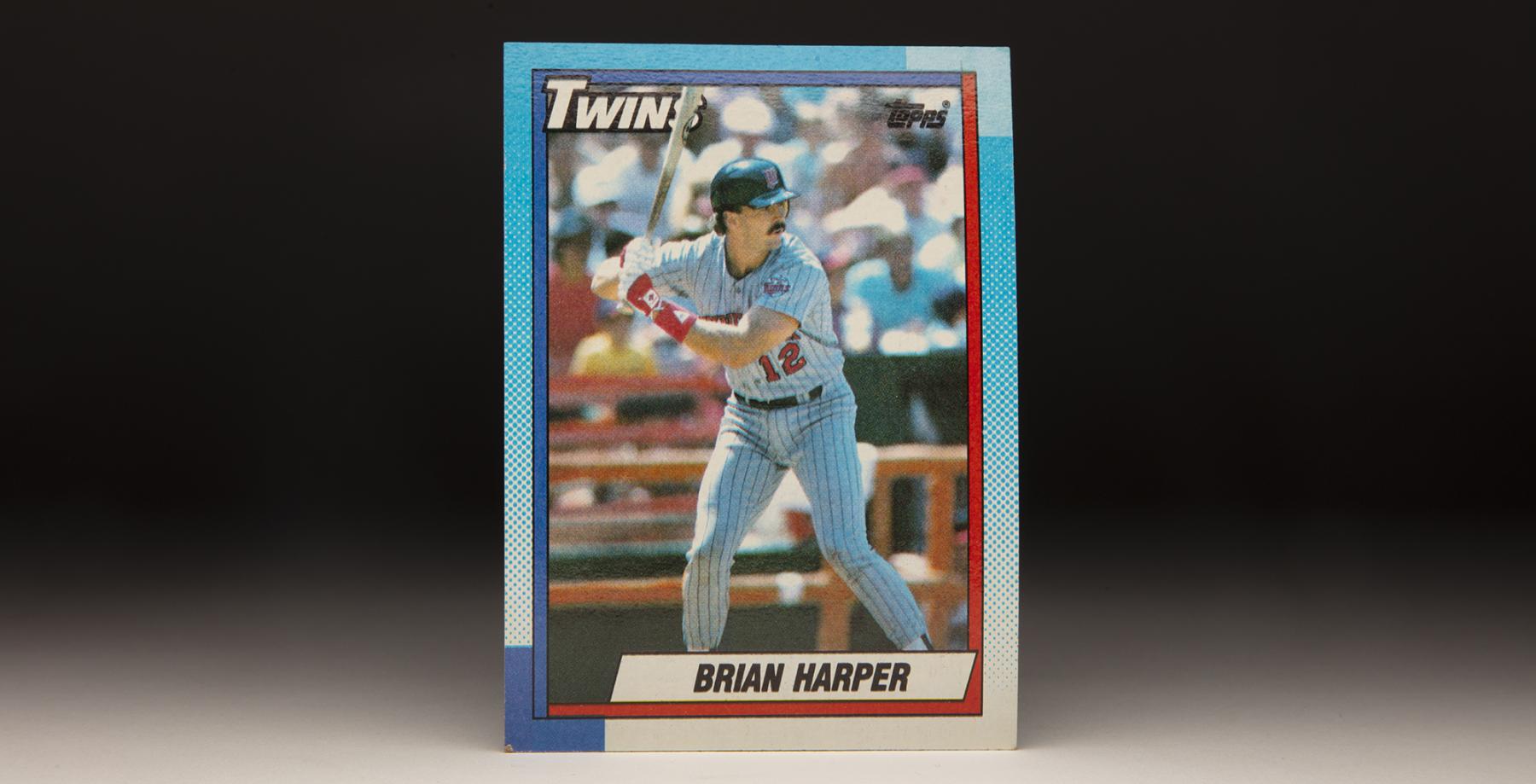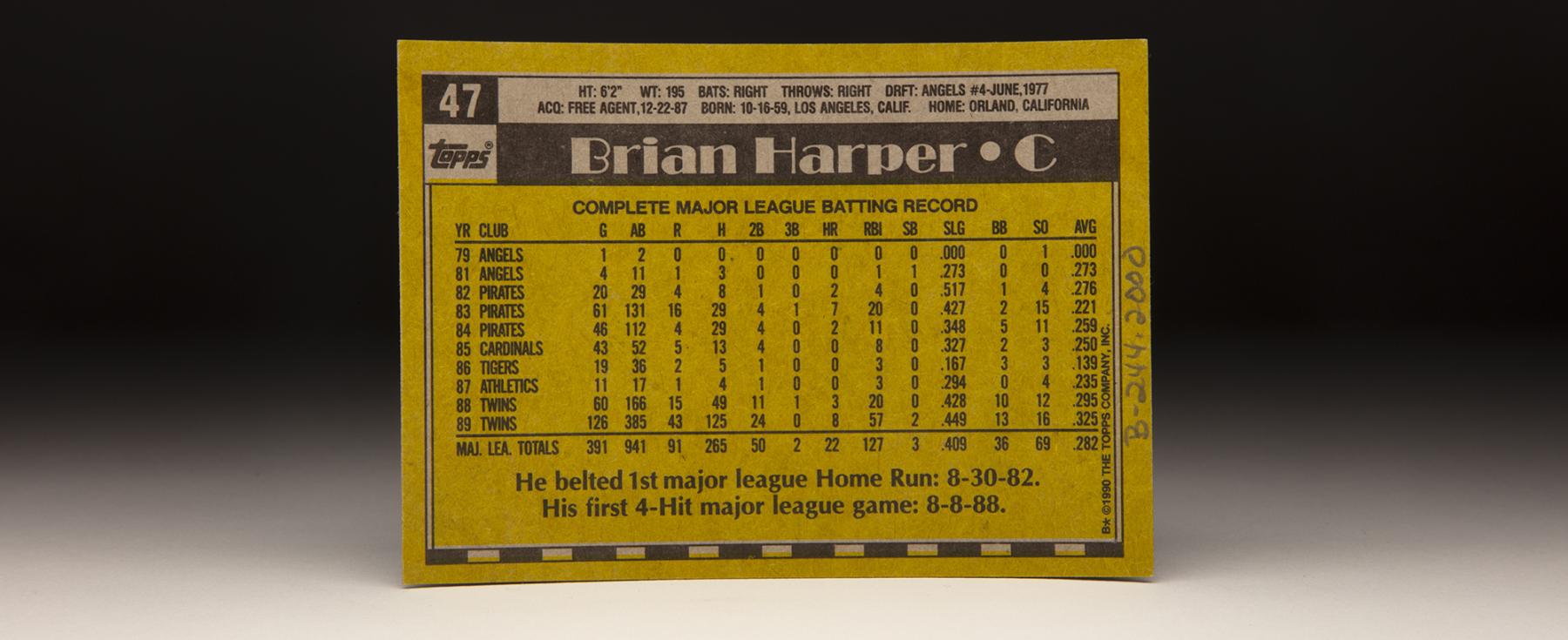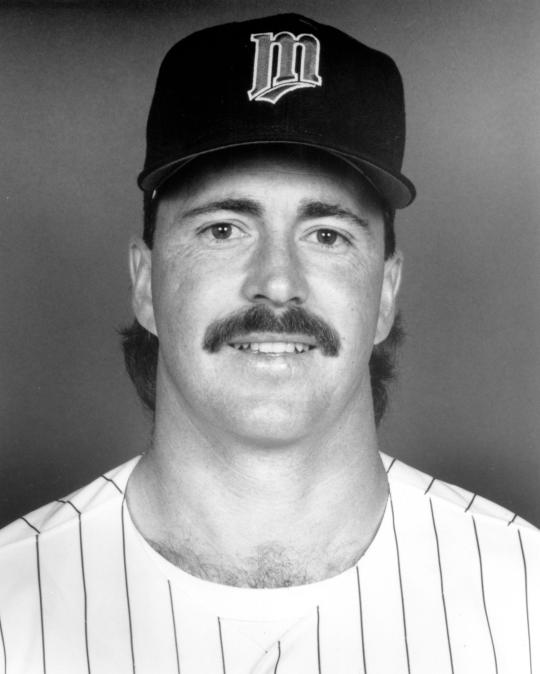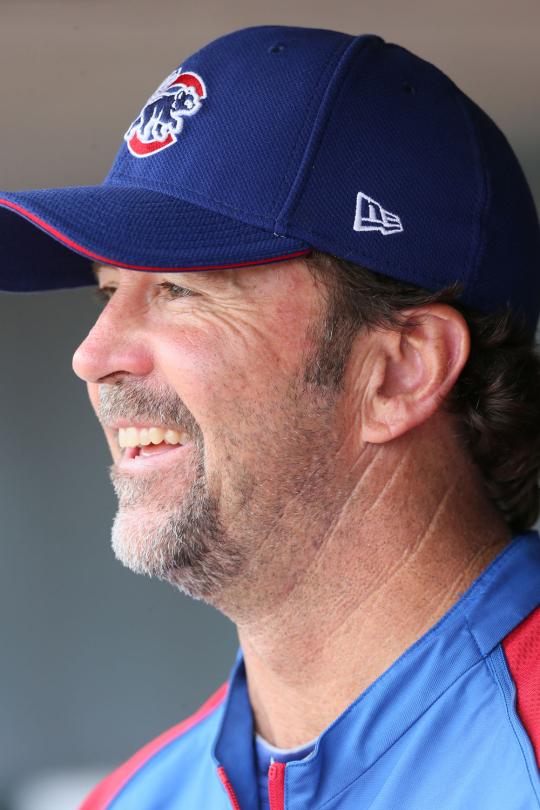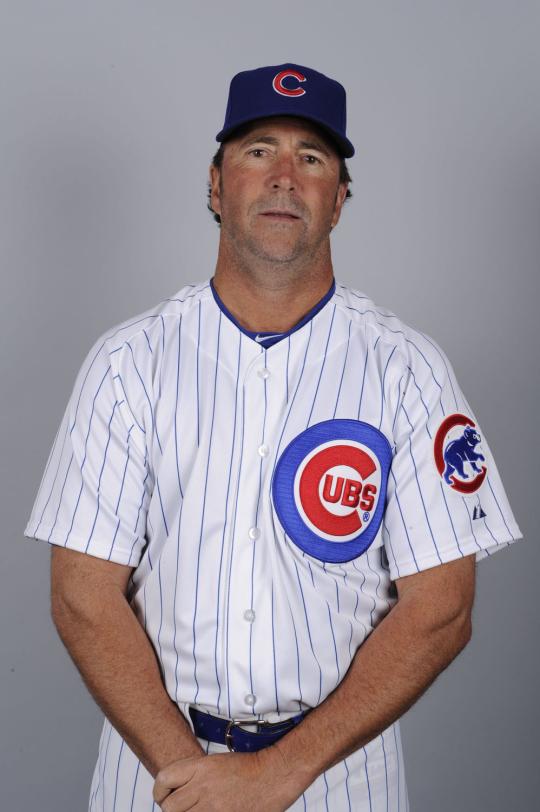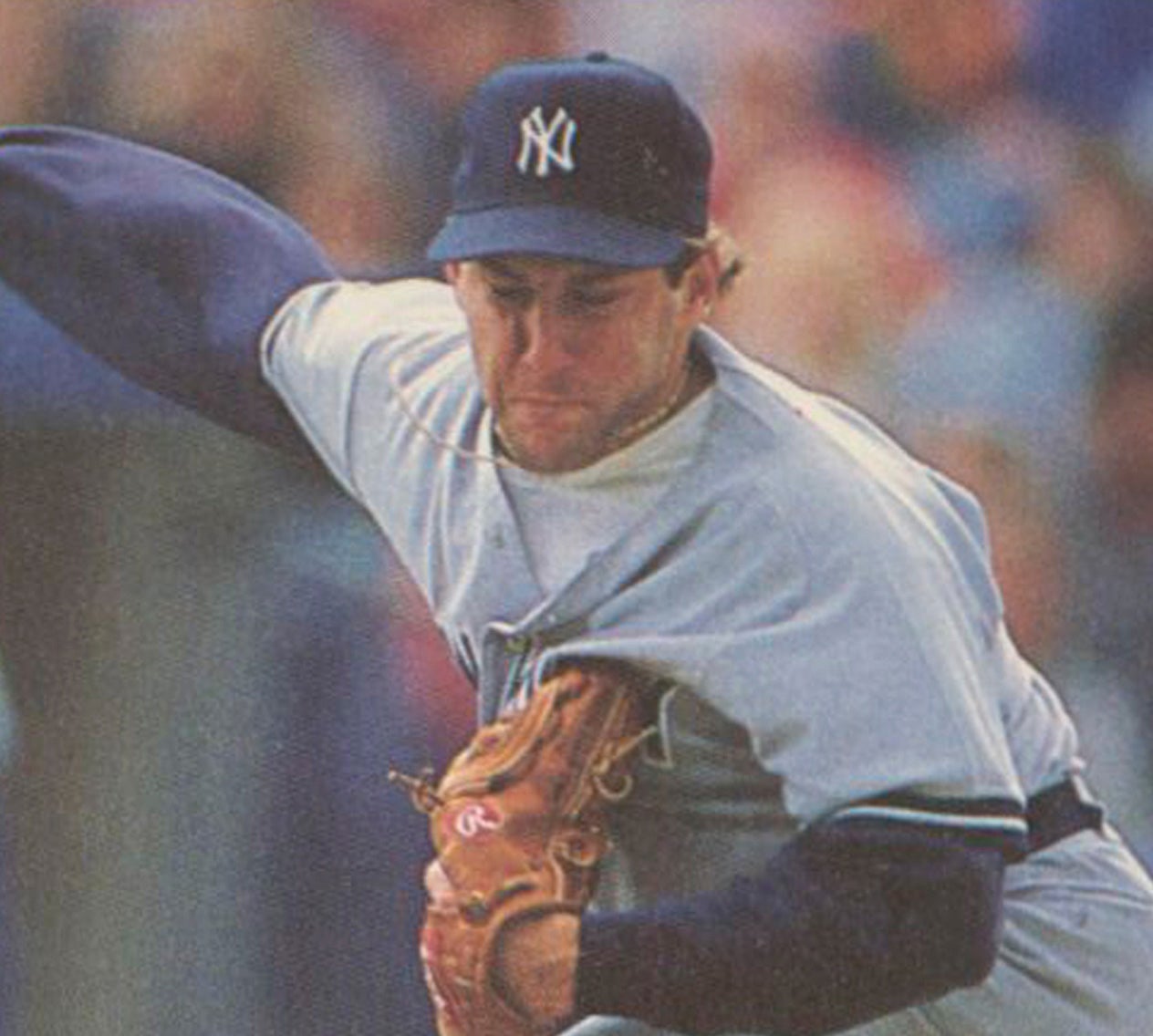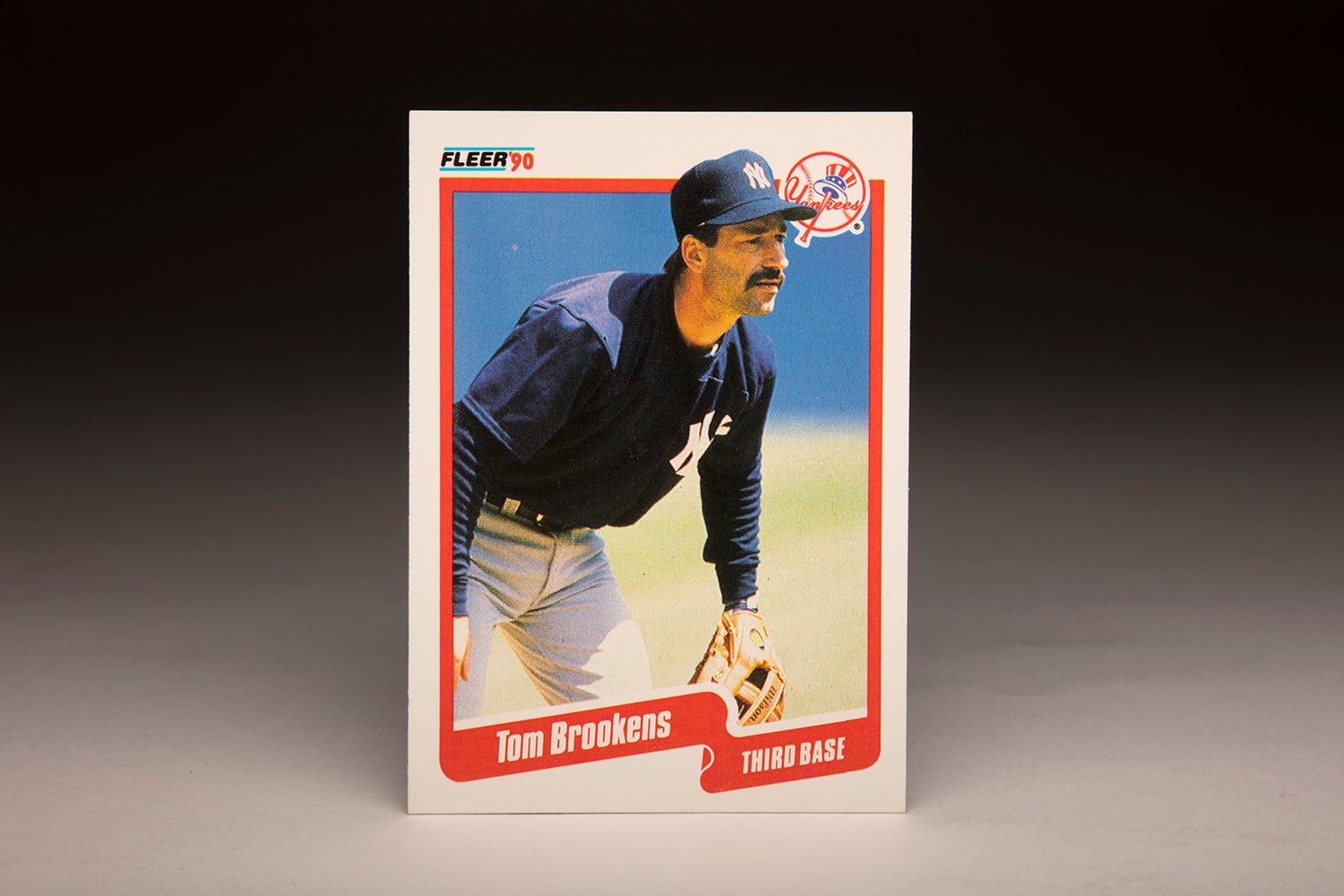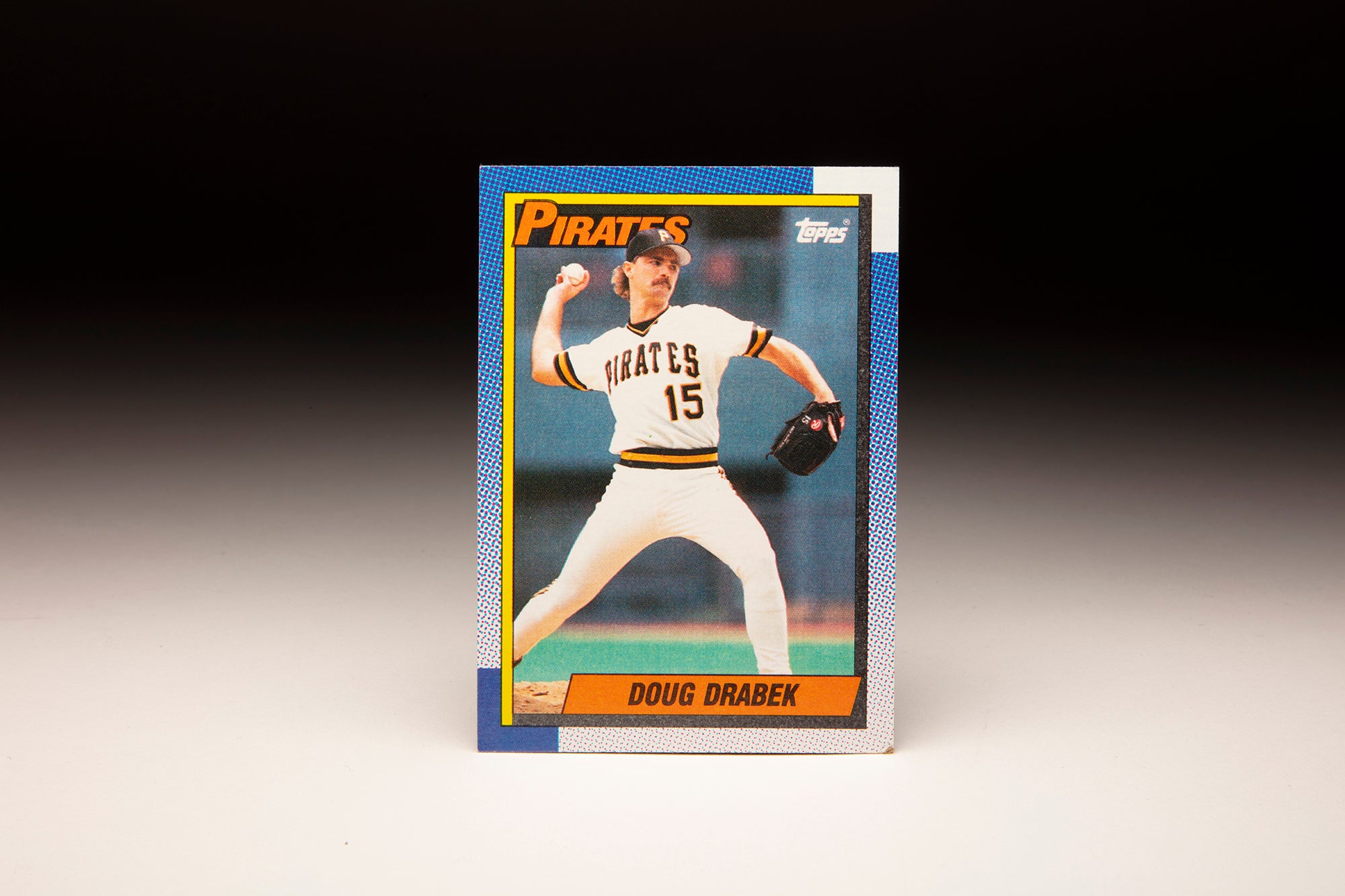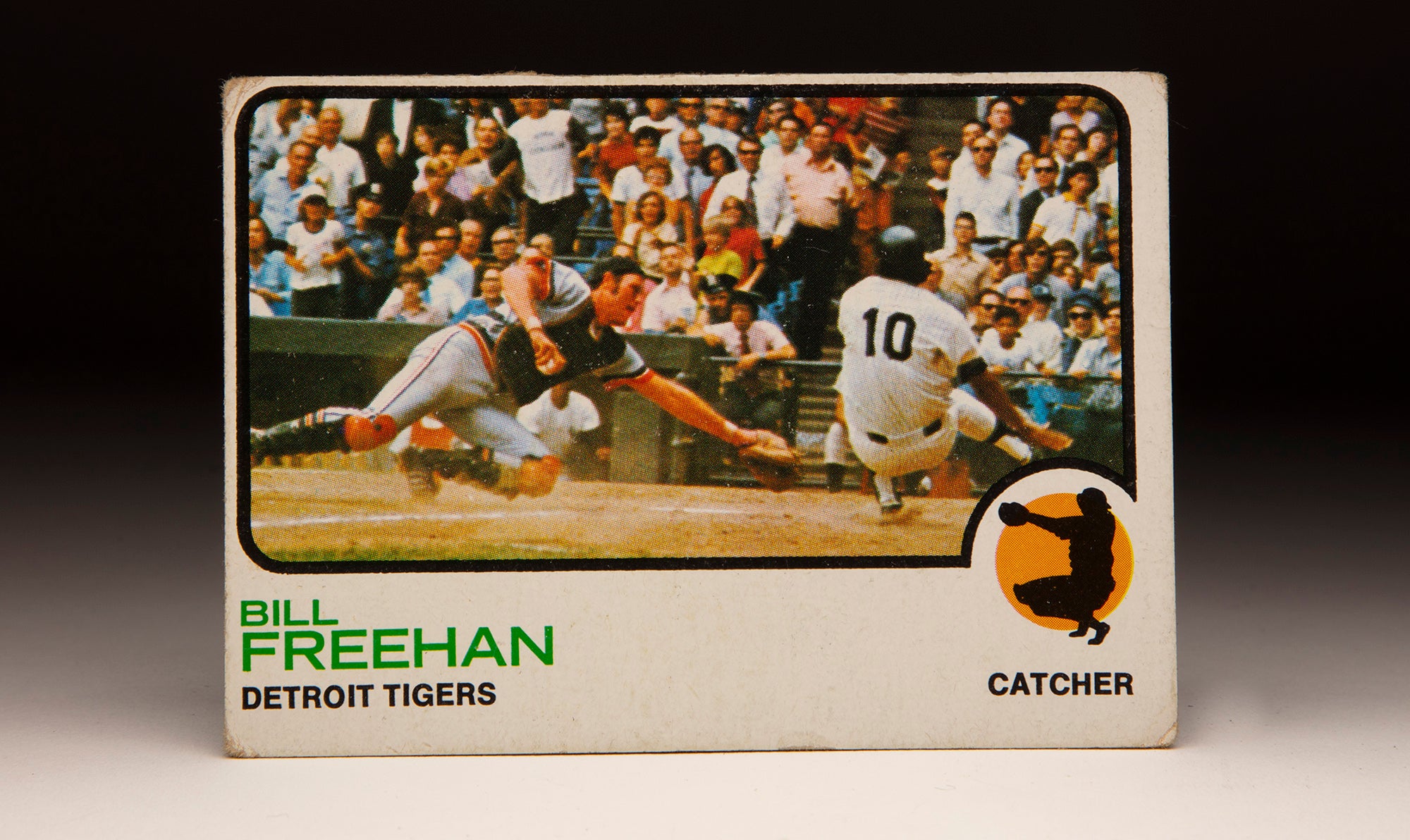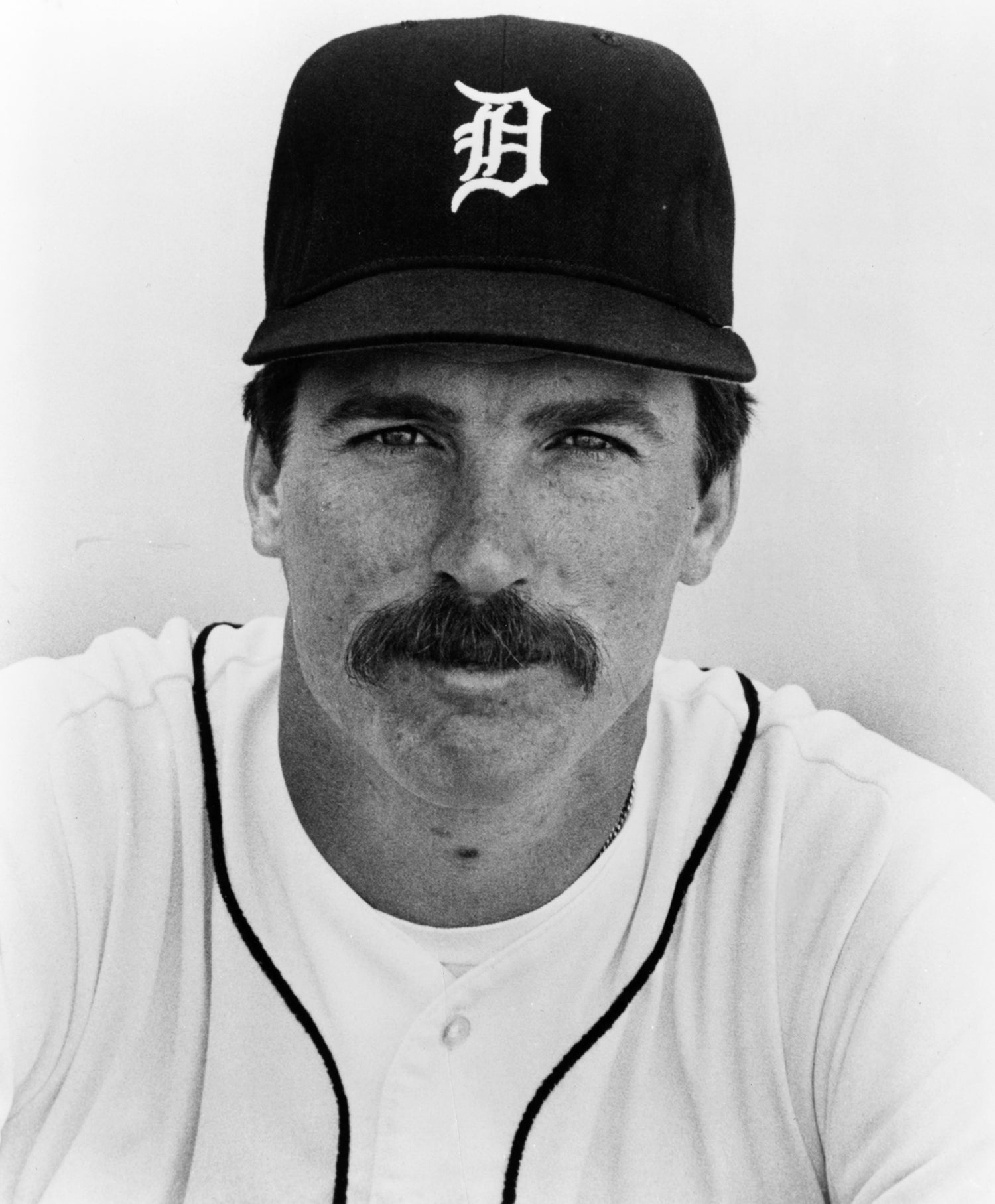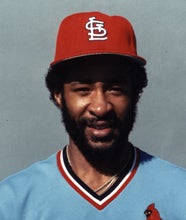- Home
- Our Stories
- #CardCorner: 1990 Topps Brian Harper
#CardCorner: 1990 Topps Brian Harper
They were once as common as third-string catchers and complete game pitchers, roaming the baseball landscape with regular frequency.
Today, they are virtually extinct: Players who don’t strike out and do not draw walks.
Brian Harper was one of the best.
Harper played in 16 different big league seasons for the Angels, Pirates, Cardinals, Tigers, Athletics, Twins and Brewers. He appeared in 100-or-more games in only five of those campaigns, with another three that featured at least 60 contests.
Official Hall of Fame Merchandise
Hall of Fame Members receive 10% off and FREE standard shipping on all Hall of Fame online store purchases.
He totaled neither 30 walks nor 30 strikeouts in not one of those seasons. And he only hit 63 home runs.
But while failing the “three true outcomes” test, Harper established himself as one of the best hitting catchers of his generation.
Born Oct. 16, 1959, in Los Angeles and raised in nearby San Pedro, Harper was selected out of high school by the California Angels in the fourth round of the June 1977 MLB Draft. Harper, whose older brother Glenn was drafted by the Mets in 1972 and enjoyed a five-year minor league career, hit .447 with 37 RBI in the spring of 1977 as a catcher for San Pedro Pirates.
The Cardinals selected future big league pitcher Jim Gott one pick ahead of Harper. The pick after Harper – owned by the San Diego Padres – was used on future Hall of Famer Ozzie Smith.
Harper had agreed to play for Pepperdine University, but signed with the Angels – who had brought him to Angels Stadium for a workout that spring – and was sent to Idaho Falls of the Pioneer League, where he hit .323 in 52 games.
“The Angels didn’t tell me which round I would be selected in, but they said it would be rather high within the first day,” Harper told the News-Pilot of San Pedro. “Ever since I remember, I’ve wanted to play professional baseball. I know where my future is.”
In 1978, Harper established himself as a top hitting prospect by batting .293 with 24 home runs and 101 RBI in 129 games for Quad Cities of the Class A Midwest League. His play behind home plate was a work in progress, but his bat put him on a fast track to the big leagues.
The following year, the 19-year-old Harper was promoted to Double-A El Paso, where he hit .315 with 37 doubles, 14 homers and 90 RBI. The Angels brought Harper to the big leagues on Sept. 3 in the midst of a heated pennant race in the American League West.
“I drove home from El Paso (Sept. 1) and (the Angels) called me (Sept. 2),” Harper told the News-Pilot. “I was kinda shocked. Last year I had more home runs but I was a better hitter this year.
“They want me to get used to being around (the big league team). I’m mainly here just for the experience.”
Harper made his big league debut on Sept. 29, going 0-for-2 as a pinch hitter and DH against the Rangers. He was ineligible for the postseason, but had a front-row view as the Angels won their first AL West crown before falling to the Orioles in the ALCS.
Harper returned to El Paso in 1980, hitting .285 with 12 homers and 66 RBI in 105 games. Promoted to Triple-A Salt Lake City in 1981, Harper tore up the league – hitting .350 with 28 home runs and 122 RBI in 134 games – leading the league with 192 hits and 339 total bases. He drew 39 walks and struck out just 33 times, but was denied the league’s Most Valuable Player Award when Albuquerque’s Mike Marshall won the league’s Triple Crown.
Amazingly, Harper wasn’t considered by many to be even the best hitter on his own team. That title went to Daryl Sconiers, a smooth-swinging outfielder who hit .354 but lacked Harper’s power.
The Angels called Harper up to the majors that September, but he appeared in only four games (hitting .273). On Dec. 11, 1981, the Angels – looking for a veteran shortstop – sent Harper to the Pirates in exchange for Tim Foli.
“I guess in the back of my mind I knew I had a chance to be traded,” Harper told the News-Pilot while playing winter ball in Venezuela. “I had a pretty good year in Triple-A, and (the Angels) were in last place and didn’t even give me a chance to play.
“I don’t know if they didn’t like me or what. I didn’t think they would trade the young guys.”
Still a work in progress behind the plate, Harper began a crash course in the outfield as the Pirates tabbed him as a candidate for left field in 1982.
“(Harper) reminds me of Richie Zisk at a similar age,” said Pirates general manager Harding Peterson.
But after making the Pirates’ Opening Day roster, Harper appeared in only seven of the Pirates’ first 28 games – six as a pinch-hitter. Pittsburgh optioned Harper to Triple-A Portland, where he hit .284 with 17 home runs and 73 RBI in 101 games. The Pirates brought him back to Pittsburgh in late August, and Harper saw regular action in left field in September.
“It was probably the best thing that ever happened to me,” Harper told the Philadelphia Daily News following a Sept. 17 game against the Phillies where his three-run home against Steve Carlton powered Pittsburgh to a 4-2 win. “I had a bad year in winter ball and I had a mediocre spring. I was pressing, trying to do too much.”
Harper spent the entire 1983 and 1984 seasons with the Pirates, but struggled to find a place in the lineup. With All-Star Tony Peña behind home plate and veterans like Mike Easler and Lee Mazzilli blocking his way in left field, Harper appeared in just 107 games over two seasons, batting .239 while platooning much of the time.
“There were very few left-handed starters in the National League at that time,” the right-handed hitting Harper said.
But in a sign of things to come, Harper started behind the plate in the final game of the 1984 campaign, going 3-for-4 against the Phillies.
On Dec, 12, 1984, the Pirates traded Harper and John Tudor to the Cardinals in exchange for George Hendrick and a minor leaguer. And while it was Tudor who earned the headlines with his fantastic 1985 season – where he went 21-8 with a big league best 10 shutouts for the NL champion Cardinals – Harper would finally be on a path to a regular job in the big leagues.
Harper made the Cardinals Opening Day roster in 1985 as a bench player, finishing the season with a .250 batting average in 43 games. In the World Series against the Royals, Harper was in line to be the hero after his two-out, pinch-hit single in the eighth inning of Game 6 scored Terry Pendleton to snap a scoreless tie. But Kansas City rallied for two runs in the bottom of the ninth – following a leadoff infield single by Jorge Orta on a play where he appeared to be out at first base – to force Game 7, where the Cardinals fell 11-0.
“I even had my little speech ready for what I was going to say after the game,” Harper told the Associated Press following Game 6. “You’ve just got to put it behind you.”
Harper’s strong faith helped him deal with the seasons that followed. He was released by the Cardinals toward the end of Spring Training in 1986. He hooked on with the Tigers three weeks later and appeared in 16 games with Detroit that May. But he was hitting just .139 when he was outrighted to Triple-A Nashville on June 2 to make room for Kirk Gibson, who was returning from the disabled list.
Harper, who could have elected to become a free agent, accepted the assignment and hit .262 in 95 games with the Sounds. He was released by the Tigers in Spring Training of 1987 before hooking on with the Athletics, spending most of that season with Triple-A Tacoma.
On Jan. 4, 1988, Harper – once again a free agent – signed with the Twins.
“I love baseball. That’s all I’ve ever done,” Harper told the AP while batting for a bench spot with Minnesota that spring. “If I’m given a chance, I can do well. Until I’m not given a chance, why give up?”
The Twins sent Harper to Triple-A Portland to start the season and to work on his catching. He hit .353 with 13 homers in 46 games for the Beavers, then returned to Minnesota on May 29.
From there, Harper took over as the Twins regular catcher – hitting .355 as late as Aug. 12 before finishing at .295 over 60 games.
“Everywhere I went, I would ask to get back behind the plate,” Harper told the Minneapolis Star Tribune. “I always considered myself a catcher. I felt that my best chance to help a big league team would be as a catcher.”
Harper proved his point in 1989, hitting .325 with eight homers and 57 RBI in 126 games – striking out 16 times while drawing 13 walks. Defensively, Harper ranked in the middle of the pack among AL receivers.
“It was a surprise to find out that he was a solid catcher,” Twins coach Rich Stelmaszek told the Star Tribune. “How could you not be surprised? You had to figure there was a reason teams didn’t use him back there.”
The Twins, however, were unable to find it. And after moving his wife and family more than 50 times prior to arriving in Minnesota, Harper finally found a home.
Harper hit .294 with 42 doubles in 123 games in 1990, then played a major role in the Twins’ championship season of 1991. Harper hit .311 with 10 homers and 69 RBI that year, providing a stabilizing force on a pitching staff that included future Hall of Famer Jack Morris, young 20-game winner Scott Erickson and closer Rick Aguilera.
In the World Series against the Braves, Harper batted .381 with hits in five of the seven games. He was standing on deck in the 10th inning of Game 7 when pinch-hitter Gene Larkin singled in Dan Gladden with the winning run in Minnesota’s epic 1-0 victory.
Harper became a free agent after the 1991 season but quickly accepted the Twins offer of salary arbitration and later signed a two-year deal worth $5 million that included an option for a third season. He played in 140 games in 1992 and a career-high 147 in 1993, appearing as a catcher in 93 percent of those contests.
He drove in 73 runs in each season, averaging .304 in 1992 and .302 the following year. But the Twins chose not to exercise his third-year option – the move was widely reported as a cost-cutting measure – and he eventually signed with the Milwaukee Brewers.
Harper hit .291 with Milwaukee in 1994 before once again becoming a free agent. He signed a minor league deal with Oakland on April 20, 1995, but appeared in just two games for the Athletics that season before announcing his retirement in May.
“I was more interested in how my son’s Little League team was doing instead of the A’s,” Harper told the AP. “I couldn’t just go through the motions and simply collect a paycheck.”
After a cameo appearance with the Triple-A Tacoma Rainiers in 2000, Harper worked his way into the managerial and coaching ranks in the minor leagues, serving in the Angels, Giants, Cubs and Tigers organizations.
He finished his big league career with a .295 batting average in 1,001 games. He is one of only 11 catchers in history with at least 1,000 games played and a .295 batting average. Of that group, only Harper struck out fewer than 200 times in his career.
Among all Live Ball Era (post 1919) position players in history who appeared in at least 1,000 games, Harper is one of only two big leaguers – along with Don Mueller – to compile fewer than 200 walks and 200 strikeouts.
“Brian,” Twins manager Tom Kelly told The Dispatch of Moline, Ill., “is a pure hitter.”
Craig Muder is the director of communications for the National Baseball Hall of Fame and Museum

